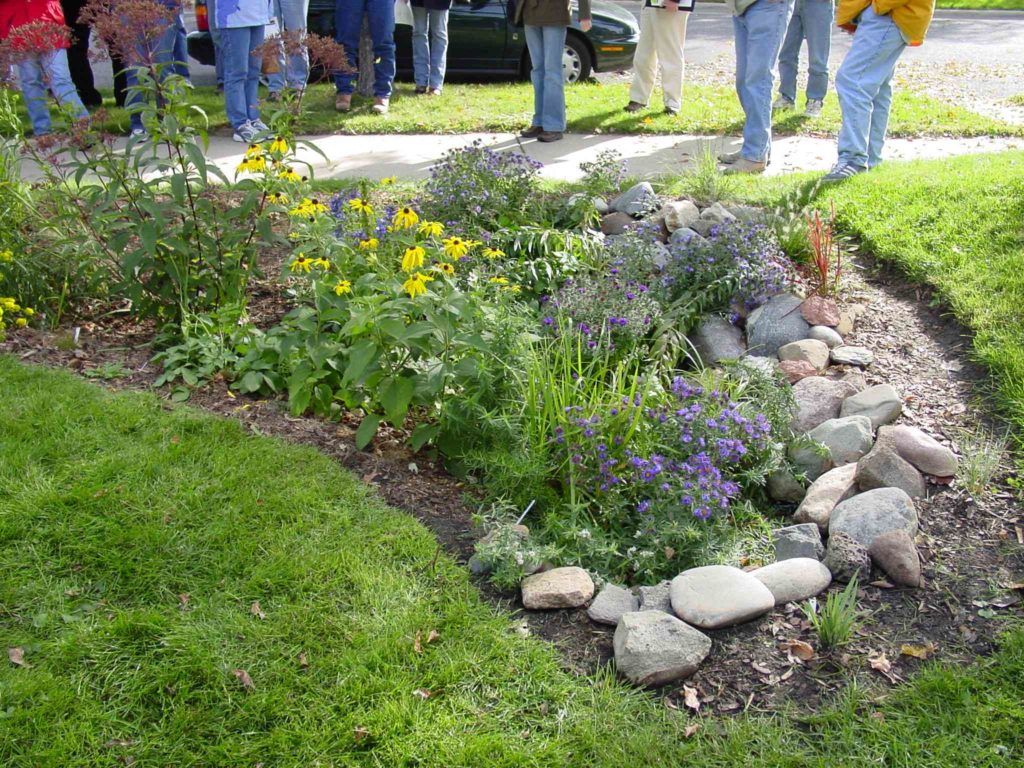 As part of St. Louis City’s Sustainability Plan, the City encourages the use of green infrastructure practices, and is working with many partners in this effort. One of these efforts includes rain gardens: landscaped beds designed to collect and absorb stormwater runoff. A rain garden is permeable surface area that often has the benefit of attracting and providing habitat for native plants, birds, and insects. The primary purpose of a rain garden is to manage stormwater by absorbing and slowing down runoff during and after a rain, while also filtering and cleaning excess water before it can enter the sewer system. Large storms often create an initial flush of sediment, oil and debris — all of which can be successfully intercepted by rain gardens.
As part of St. Louis City’s Sustainability Plan, the City encourages the use of green infrastructure practices, and is working with many partners in this effort. One of these efforts includes rain gardens: landscaped beds designed to collect and absorb stormwater runoff. A rain garden is permeable surface area that often has the benefit of attracting and providing habitat for native plants, birds, and insects. The primary purpose of a rain garden is to manage stormwater by absorbing and slowing down runoff during and after a rain, while also filtering and cleaning excess water before it can enter the sewer system. Large storms often create an initial flush of sediment, oil and debris — all of which can be successfully intercepted by rain gardens.
Stormwater management is particularly important in the City of St. Louis because of the combined sewer system (a sewer system that handles both waste water and stormwater in the same pipe, which becomes overcharged during heavy rain events). The City is actively promoting the use of green infrastructure techniques, such as rain gardens, and has many partners in this effort. Some examples of successful rain garden projects in the City include the South Grand Great Streets Initiative, the Missouri Botanical Garden and City Garden to name a few.
To see more examples and read on, see here.
To see a demonstration of a Rain Garden, see the Partnership for Downtown St. Louis’ website here.
